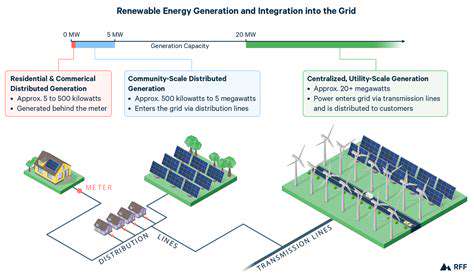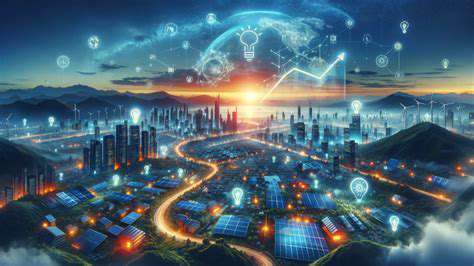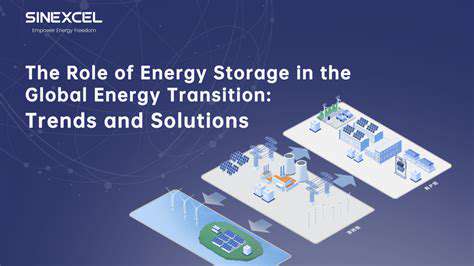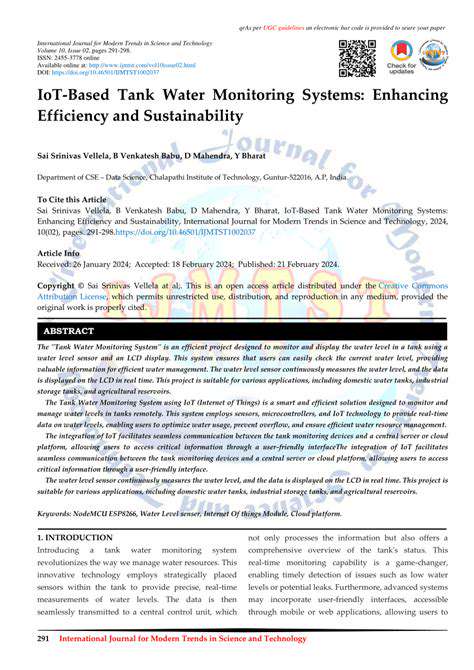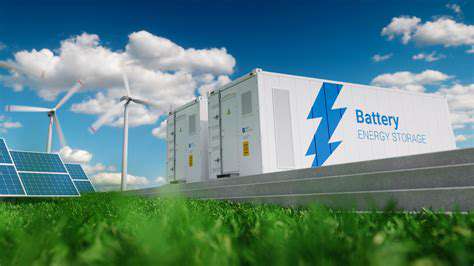Decentralization of Energy Generation Technical Challenges
Intermittency and Reliability of Renewable Sources
Intermittency Challenges
Renewable energy sources like solar and wind power are inherently intermittent, meaning their output fluctuates based on weather conditions. This variability poses a significant challenge to grid stability and the reliable delivery of electricity. Predicting the exact output of these sources is crucial for grid management, but perfect accuracy is difficult to achieve, leading to potential imbalances in supply and demand. The intermittent nature of these sources necessitates the development of sophisticated energy storage solutions and smart grid technologies to ensure a consistent and reliable energy supply.
Managing the fluctuating power output from intermittent renewables requires careful planning and coordination. Strategies for energy storage, including pumped hydro, batteries, and thermal storage, are essential to compensate for periods of low generation. Furthermore, integrating renewable energy sources into existing grids necessitates the development of advanced forecasting models and dynamic control systems to optimize energy distribution and minimize disruptions.
Reliability Enhancements
Improving the reliability of renewable energy sources is paramount for their effective integration into decentralized energy systems. This involves developing advanced forecasting models that accurately predict power output from different renewable sources, taking into account factors like weather patterns, geographical location, and time of day. These models can help in load balancing and provide greater confidence in the ability to meet energy demands.
Furthermore, diversifying renewable energy sources across different geographical locations can help mitigate the impact of intermittency. Combining solar power in sunny regions with wind power in windy regions, for example, can create a more stable and reliable energy supply. This geographical diversification reduces the reliance on any single source and enhances overall grid resilience.
Grid Integration Strategies
The effective integration of intermittent renewable energy sources into existing electricity grids requires thoughtful strategies. One key aspect is the development of smart grid technologies that enable real-time monitoring and control of energy flow. These technologies can dynamically adjust energy distribution based on the current generation capacity of renewable sources and the overall electricity demand. This dynamic response is crucial for maintaining grid stability and preventing outages during periods of low renewable output.
Another crucial aspect is the development of energy storage solutions to address the intermittency of renewable resources. Implementing large-scale energy storage systems, such as pumped hydro storage or advanced battery technologies, can help buffer the fluctuations in renewable energy generation and ensure consistent power supply. Such strategies are essential for the reliable operation of decentralized energy systems incorporating significant renewable energy components.
Storage Solutions and Decentralization
Decentralized energy generation often relies heavily on renewable energy sources, which necessitates robust energy storage solutions to address the intermittency issue. Developing cost-effective and scalable energy storage technologies is vital for ensuring the reliability and sustainability of decentralized energy systems. This includes exploring diverse storage options, such as pumped hydro storage, which can store energy at a large scale, and battery storage, which offers a flexible and potentially more localized solution. The success of decentralized energy systems depends on the ability to efficiently store excess renewable energy for use during periods of low generation.
The integration of energy storage with decentralized energy generation systems is crucial for providing a stable and reliable energy supply. Smart grid technologies play a key role in optimizing the use of energy storage, enabling efficient dispatch of stored energy to meet fluctuating demands. This optimization is crucial for the successful implementation of decentralized energy systems, which are predicated on the use of renewable and intermittent energy sources.
Grid Integration and Management Complexity
Grid Integration Challenges
Integrating decentralized energy generation sources, such as rooftop solar panels and small wind turbines, into existing electrical grids presents a significant challenge. Traditional grids are designed for centralized power generation, with a single point of origin and a predictable flow of electricity. Decentralized generation introduces variability and unpredictability, requiring sophisticated management systems to maintain grid stability and reliability. This variability in power output necessitates real-time monitoring and control mechanisms to ensure the grid operates within safe parameters.
Managing the fluctuating energy supply from these diverse sources is crucial for ensuring a stable grid. This includes forecasting energy production, anticipating demand, and adjusting generation accordingly. Furthermore, the integration of energy storage solutions, crucial for smoothing out intermittent renewable energy sources, adds another layer of complexity to grid management.
Demand Response Strategies
Effective grid management requires proactive strategies to adapt to fluctuating energy demand. Demand response programs, which incentivize consumers to adjust their energy consumption patterns, play a vital role in mitigating the strain on the grid during peak demand periods. These programs can involve offering financial incentives or other rewards to consumers who reduce their energy usage during times of high demand.
Smart grids, equipped with advanced sensors and communication technologies, are critical for implementing demand response programs effectively. These technologies enable real-time monitoring of energy consumption and allow for automated adjustments to optimize grid performance. This dynamic approach to energy management is essential for maintaining grid stability in the face of increasing renewable energy penetration.
Data Management and Analytics
The sheer volume of data generated by decentralized energy systems and the complexity of grid operations necessitate robust data management and analytics capabilities. Collecting, processing, and analyzing this data is essential for understanding energy flow patterns, predicting future demand, and optimizing grid performance. Sophisticated algorithms and machine learning models are crucial for identifying patterns and trends in energy consumption and generation.
Accurate data analysis allows for the development of predictive models to anticipate future energy needs and optimize grid operations. This predictive capability is vital for effective grid management, enabling proactive measures to prevent grid instability and ensuring reliable power delivery.
Grid Modernization and Infrastructure Upgrades
Modernizing existing grid infrastructure is essential for accommodating the influx of decentralized energy sources. Upgrades to transmission and distribution networks, as well as the implementation of smart grid technologies, are critical for enhancing grid stability and reliability. Investing in grid modernization is a necessary step to effectively integrate diverse energy sources and maintain grid performance.
These upgrades encompass various aspects of the grid, including the installation of smart meters, the development of advanced communication networks, and the deployment of advanced control systems. Such advancements are necessary to handle the increased complexity and variability introduced by decentralized energy generation.
Cybersecurity Considerations
As grids become more interconnected and reliant on digital technologies, ensuring cybersecurity is paramount. The integration of decentralized energy systems introduces new vulnerabilities, demanding robust cybersecurity measures to protect critical infrastructure from cyberattacks. Cybersecurity protocols are crucial to safeguarding the reliability and security of the electricity supply.
Protecting the integrity of the grid's data and communication systems is essential to prevent malicious interference and ensure the continued operation of the power system. Implementing robust cybersecurity measures is a critical component of managing the complexities of grid integration in the context of decentralized energy generation.

Energy Storage Solutions for Variable Generation

Improving Energy Storage Efficiency
Energy storage solutions are crucial for a reliable and sustainable energy system. Improving the efficiency of these solutions is paramount to maximizing their impact on grid stability and reducing overall energy costs. Advanced materials and innovative technologies are constantly being developed to increase the energy density and power output of storage devices, thereby improving their overall efficiency and reducing their environmental footprint. This includes research into new battery chemistries, supercapacitor advancements, and exploring novel energy storage mechanisms like flow batteries.
Significant efforts are being made to develop more efficient energy storage systems. This involves not only optimising existing technologies but also exploring completely new approaches. For example, advancements in materials science could lead to batteries with significantly higher energy storage capacities, reducing the need for larger storage facilities. This would be a major step forward in minimizing the environmental impact of energy storage. Furthermore, reducing the cost of these solutions is crucial for widespread adoption.
Exploring Diverse Applications
Energy storage solutions are no longer confined to just the grid. They have diverse applications spanning transportation, residential use, and industrial sectors. Electric vehicles, for instance, rely heavily on battery technology for propulsion, highlighting the critical role of energy storage in the transition to a sustainable transportation system. Home energy storage systems are becoming increasingly popular, allowing homeowners to manage their energy consumption and potentially reduce their reliance on the grid during peak demand periods.
Beyond these applications, energy storage plays a vital role in industrial processes. Industries that rely on fluctuating energy demands, such as data centers and manufacturing facilities, can benefit significantly from energy storage solutions. This allows for greater operational flexibility and reduces energy costs associated with peak demand charges. These diverse applications underscore the broad impact that energy storage solutions can have on various sectors of society.
Addressing Challenges and Future Trends
Despite the progress made, several challenges remain in the development and implementation of energy storage solutions. One significant hurdle is the cost-effectiveness of these technologies. Overcoming this barrier is crucial for widespread adoption and integration into the existing energy infrastructure. Additionally, ensuring the long-term sustainability and safety of storage devices is essential to address concerns about environmental impact and potential hazards.
Future trends in energy storage point towards a more interconnected and intelligent energy system. The integration of smart grids and the development of advanced control systems will play a key role in optimizing energy storage utilization. This will allow for dynamic management of energy flow, maximizing the benefits of decentralized energy generation and storage. Furthermore, advancements in artificial intelligence and machine learning will likely play a crucial role in optimizing the performance and efficiency of energy storage systems, paving the way for a more sustainable and intelligent energy future.
Cybersecurity and Data Management
Cybersecurity Threats in Decentralized Energy Systems
Decentralized energy generation, while offering numerous benefits, introduces novel cybersecurity vulnerabilities. Connecting multiple, disparate energy sources and storage units to a network creates a larger attack surface compared to traditional centralized grids. Malicious actors could target these individual components, potentially disrupting the entire system or compromising sensitive data about energy production and consumption patterns. This necessitates robust security measures for each individual generator and the communication infrastructure connecting them.
Data Management Challenges in Distributed Systems
Managing data from numerous distributed energy sources presents significant challenges. Data volume, variety, and velocity are all amplified in decentralized systems. Ensuring data integrity, accuracy, and availability across diverse platforms and formats is crucial. Effective data management systems are needed to aggregate, process, and analyze this information to optimize performance, identify inefficiencies, and maintain grid stability. This also includes developing secure and reliable methods for data storage and retrieval.
Secure Communication Protocols for Energy Networks
Reliable and secure communication channels are paramount for the efficient operation of decentralized energy systems. Implementing robust encryption protocols and authentication mechanisms is essential to prevent unauthorized access and data manipulation. This includes securing communication between individual generators, energy storage units, and the control center. The protocols must be scalable and adaptable to accommodate the growing complexity of distributed energy networks.
Protecting Critical Infrastructure Components
Cybersecurity vulnerabilities in critical infrastructure components, such as inverters, sensors, and communication gateways, are a serious concern. Protecting these components from attacks is crucial for maintaining grid stability and preventing disruptions in energy supply. Implementing advanced security measures, including intrusion detection systems and firewalls, is vital to detect and mitigate potential threats. Regular security audits and vulnerability assessments are also necessary to identify and address potential weaknesses in the system.
Data Privacy and Compliance in Decentralized Energy
Ensuring data privacy and compliance with relevant regulations is critical in decentralized energy systems. Handling personal data from consumers and managing sensitive operational information requires strict adherence to privacy regulations. Developing robust data anonymization techniques and implementing access control measures are essential to protect user information. This includes meeting compliance standards for data handling and security.
Developing Robust Security Frameworks for Decentralized Systems
Creating a comprehensive and adaptable security framework that addresses the unique challenges of decentralized energy systems is essential. This framework should encompass a holistic approach to security, covering everything from data encryption to physical security measures at individual generator sites. Regular security training for personnel involved in managing these systems is also critical for maintaining a high level of security awareness and preventing human error. The framework must be flexible and adaptable to evolving threats and technological advancements.
Addressing Emerging Threats and Vulnerabilities
The decentralized energy landscape is constantly evolving, leading to new and emerging cybersecurity threats. Staying ahead of these threats requires continuous monitoring, research, and development of new security measures. This includes adapting to new attack vectors and vulnerabilities, as well as adapting security measures to the ever-changing technological advancements. Continuous learning and adaptation are vital to maintain the system's resilience and security in the face of ongoing threats.
